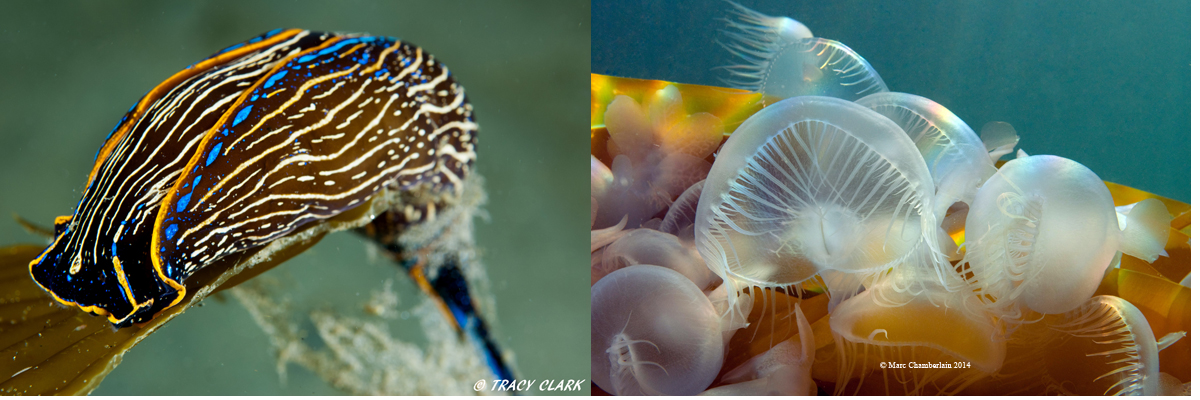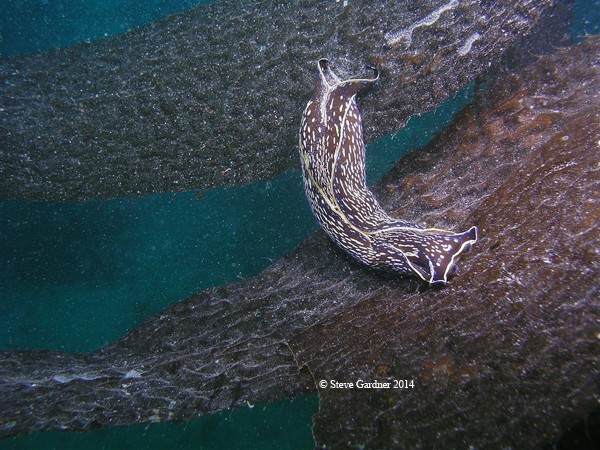 |
Navanax inermis and Melibe leonina
Images courtesy of
Tracy Clark and Marc Chamberlain
N. inermis photographed at La Jolla Shores by Steve Gardner
This story actually began in the April/May time frame in the San Diego area at diving spots frequented by shore divers! The story unfolded in a discussion with Herb Gruenhagen who is probably the most knowledgeable person
I know of as to what is happening at La Jolla Shores, one of our more popular shore diving locations. Anyhow at the July San Diego Underwater Photographic Society meeting, Herb told me about an unexpected
behavior at the Shores! The behavior being the sighting of Navanax inermis (Courtesy of Bill Rudman's Seaslug Forum) on the stalks of kelp and evidently quite happy being there. Heretofore, the Webmaster had always thought
of N. inermis as a benthic zone dweller but it would seem that when opportunity knocks, N. inermis is no different from many other inhabitants of the animal
world. They adapt to feed and survive! Herb indicated that beginning in April, there was a profusion of Melibe leonina on the kelp. However, it was noted that with the presence of N. inermis
on a stalk, M. leonina quickly disappeared! The natural conclusion was that of M. leonina being eaten by N. inermis . Bill Rudman notes on his Sea Slug Forum that
"... Navanax inermis feeds on other sea slugs-such as bubble shells and sometimes nudibranchs. On Rock shores it ends to feed on nudibranchs such as
Hermissenda crassicornis ,
Polycera atra and while on sheltered muddy or sand bottoms it feeds on bubble shells such as Haminoea virescens and Bulla gouldiana ..."
To the above observations, I would propose adding M. leonina to the list of edibles in a kelp environment! This view is unsupported by photographic evidence as none has been presented by
local divers, but I would lay odds that our known voracious predator N. inermis is probably the culprit in the disappearance of M. leonina in the kelp stands. Interestedly enough,
by ascending the kelp stalks, N. inermis made itself vulnerable to another predator it seldom encounters on the sand or rocks, that of Pugettia producta , the kelp crab! Gayle Van Leer was able to photograph
the crab seizing up N. inermis and then
proceeding to eat N. inermis !

As a side technical note for you underwater photographers, Gayle was able to photograph the sequence without the use of strobes! She uses two (2) Sola lights, a 1200 and a 2000 and a Sony RX100 camera. Gayle sets the shutter speed typically at 1/125 or higher and then adjusts the Solas to set the aperature for depth of field. Neat indeed!
San Diego, Calif 92113
Oct., 2014
Send Mike email at mdmiller@cts.com
Send Dave email at davidwbehrens@gmail.com

